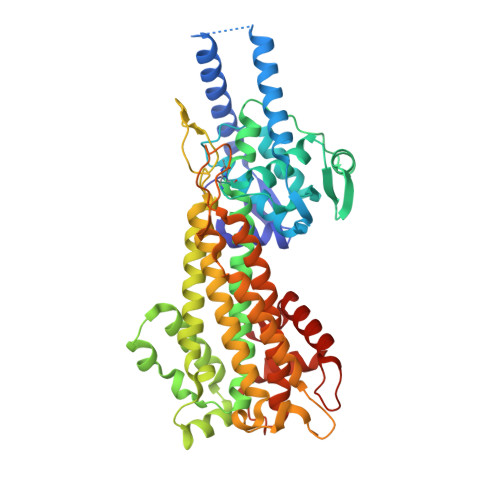Microreactor equipped with naturally acid-resistant histidine ammonia lyase from an extremophile.
Ade, C., Marcelino, T.F., Dulchavsky, M., Wu, K., Bardwell, J.C.A., Stadler, B.(2022) Mater Adv 3: 3649-3662
- PubMed: 36238657
- DOI: https://doi.org/10.1039/d2ma00051b
- Primary Citation of Related Structures:
7TQR - PubMed Abstract:
Extremophile enzymes are useful in biotechnology and biomedicine due to their abilities to withstand harsh environments. The abilities of histidine ammonia lyases from different extremophiles to preserve their catalytic activities after exposure to acid were assessed. Thermoplasma acidophilum histidine ammonia lyase was identified as an enzyme with a promising catalytic profile following acid treatment. The fusion of this enzyme with the maltose-binding protein or co-incubation with the chaperone HdeA further helped Thermoplasma acidophilum histidine ammonia lyase to withstand acid treatments down to pH 2.8. The assembly of a microreactor by encapsulation of MBP- Thermoplasma acidophilum histidine ammonia lyase into a photocrosslinked poly(vinyl alcohol) hydrogel allowed the enzyme to recover over 50% of its enzymatic activity following exposure to simulated gastric and intestinal fluids. Our results show that using engineered proteins obtained from extremophiles in combination with polymer-based encapsulation can advance the oral formulations of biologicals.
- Interdisciplinary Nanoscience Center (iNANO), Aarhus University, Gustav Wieds Vej 14, Aarhus, 8000, Denmark.
Organizational Affiliation:

















